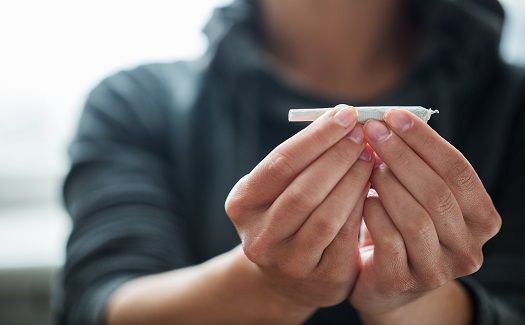Regular Cannabis Use Linked to Structural Changes in Heart
A new study from Queen Mary University of London is revealing more about the potential impact of cannabis on cardiovascular health and function.

Results of a new study from the Queen Mary University of London is establishing a potential link between cannabis use and structural changes to the heart.
Using MRI images from more than 3000 people, including 152 current or former cannabis users, investigators found regular use of cannabis was linked to enlargement of the left ventricle and early signs of impaired heart function.
With the legalization and decriminalization of cannabis becoming increasingly common throughout the world, investigators sought to evaluate potential associates between cannabis use and cardiac function and structure through MRI images of 3407 UK Biobank participants. Most of the participants rarely or never used cannabis, while 47 were current regular users, and 105 had used it regularly but more than 5 years ago—regular use was defined as daily or weekly use.
The mean age of the study population was 62 years and 55% were female. Investigators pointed out participants who were current users were more likely to be younger, male, current tobacco smokers, and have greater levels of social deprivation but were less likely to be on antihypertensive medication, compared to the non-users or previous user groups.
In analyses adjusted for factors including age, sex, BMI, diabetes, smoking, and alcohol consumption, regular cannabis use was associated with larger indexed left ventricular end-diastolic (+5.31 ml/m2, 95% CI: 1.4 — 9.3 mls/m2, P=0.008), end-systolic volumes (+3.3 mls/m2, 95% CI: 0.78 — 5.83 mls/m2, P=0.010), and impaired myocardial global circumferential strain (-0.78, 95% CI: -1.47 — -0.09, P=0.026) compared to non-users. No differences were noted between left ventricular myocardial mass, ejection fraction and stroke volume, or right ventricular, left atrial and right atrial parameters. Additionally, previous users had parameters similar to those of participants classified as rare or non-users.
While investigators noted the study, which they suggest is the first to report alterations in cardiac structure and function associated with recreational cannabis use, indicates cannabis use was associated with potentially adverse changes to heart structure they also pointed out their study had multiple limitations. Limitations of the study included being restricted to mostly (96%) Caucasians and reliance on self-reported cannabis use.
"Our findings are not conclusive but the research took place against a backdrop of decriminalization and legalization of recreational cannabis use in many countries,” said lead investigator Mohammed Khanji, MBBCh, PhD, senior clinical lecturer at Queen Mary University of London. “We urgently need systematic research to identify the long-term implications of regular consumption of cannabis on the heart and blood vessels.”
This study, titled “Association between recreational cannabis use and cardiac structure and function,” was published in JACC Cardiovascular Imaging.